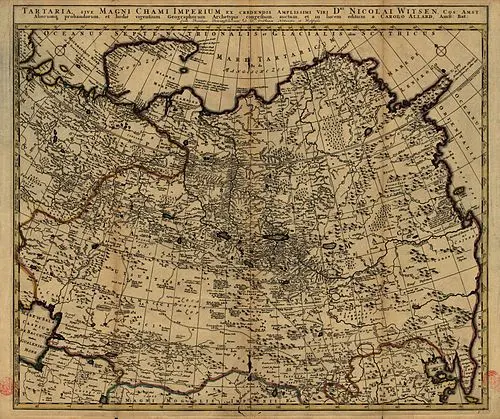"Truth is the daughter of time, not of authority." – Francis Bacon
Introduction: An Event That Changed the Century
September 11, 2001, was not just a terrorist attack — it was a turning point for the 21st century. The images of planes crashing into the Twin Towers, the buildings collapsing, the fall of World Trade Center 7, and the crater in Shanksville, Pennsylvania, are seared into global memory.
Beyond the tragedy that claimed nearly 3,000 lives, 9/11 redrew international relations, strengthened global security structures, and justified two prolonged wars. Yet, despite extensive investigations such as the 9/11 Commission Report, many questions remain unanswered — fueling one of the most complex and persistent sets of conspiracy theories in modern history.
This article explores the gaps, contradictions, and lasting implications of the 9/11 conspiracy theories, analyzing what still remains unexplained — and why.
The Birth of Theories: Between Doubts and Contradictions
Soon after the attacks, inconsistencies were reported by survivors, engineers, military personnel, and journalists. Some of the most prominent doubts formed the basis for alternative narratives, including:
-
The symmetrical collapse of the Twin Towers: demolition experts noted the buildings fell in a way that strongly resembled a controlled implosion.
-
The fall of Building 7 (WTC 7): untouched directly by planes, it collapsed in free fall hours later — a fact even acknowledged by the NIST (National Institute of Standards and Technology).
-
The absence of plane debris in Shanksville: images show a crater with minimal aircraft wreckage, leading many to question whether a plane crashed there at all.
These points laid the foundation for movements like the 9/11 Truth Movement, which has demanded an independent reinvestigation.
1. Building 7: The Great Question Mark
No other structure not hit by planes collapsed so cleanly as World Trade Center 7. NIST claimed internal fires brought it down — the first time in modern history a steel skyscraper fell due to fire.
However, Larry Silverstein, owner of the WTC complex, stated in an interview: "I remember getting a call from the fire department commander... and I said, you know, we've had such terrible loss of life... maybe the smartest thing to do is pull it.” The phrase "pull it" is widely recognized in the demolition industry as a reference to controlled demolition.
This only deepens the suspicion: was it really fire — or a deliberate takedown?
2. The Military “Stand Down”
NORAD, the U.S. air defense agency, has clear protocols for intercepting diverted aircraft. Yet, all four hijacked planes flew for nearly two hours without interception.
In later testimonies, several military officials cited confusion, simultaneous training drills, and contradictory orders. Journalist Peter Dale Scott and others studying deep politics point to the possibility of a passive stand-down — where the failure may have been intentional.
3. The Pentagon Strike: Too Small a Hole?
Another controversial point is the Pentagon attack. Early photos and eyewitnesses describe an impact site seemingly too small for a Boeing 757. Little visible wreckage, minimal wall damage, and flight maneuvers that experienced pilots found nearly impossible added fuel to the fire.
The official video released by the Department of Defense does not clearly show a commercial aircraft, which only intensified public doubt.
4. The Saudi Connection
Of the 19 hijackers, 15 were Saudi nationals. Yet Saudi Arabia faced no direct sanctions or major investigations. Documents declassified in 2021 show ambiguous connections between Saudi royals and the attackers.
The lingering question: why did retaliation focus almost exclusively on Afghanistan and Iraq? The answer may lie in the intricate U.S.-Saudi geopolitical relationship — with stakes far beyond ideology, rooted in oil and energy security.
5. Profits and Financial Anomalies
In the days leading up to the attacks, there was an unusual volume of stock trades involving airlines and insurance companies linked to 9/11. This raised red flags about insider trading. While officially investigated, no conclusive explanation was ever provided.
Such financial oddities provoke deeper questions: who knew, and when?
Why Do So Many Questions Persist?
Several factors fuel the longevity of 9/11 conspiracy theories:
-
Lack of transparency: parts of the official report remain classified.
-
Errors and omissions: crucial testimonies were ignored, key evidence went unanalyzed.
-
Social stigma: questioning the official story was quickly equated with disrespect for victims.
-
Media control: mainstream coverage often lacked depth or critical scrutiny.
Together, these dynamics created fertile ground for public distrust.
Theories vs. Facts: How to Navigate the Debate
It’s vital to distinguish wild speculation from legitimate investigation. Absurd claims — involving holograms or space weapons — only harm the credibility of serious inquiries.
Healthy skepticism is not the same as denial. Forensic science, investigative journalism, and evidence-based activism remain valid tools to challenge dominant narratives without falling into ideological traps.
Real-World Impact
9/11 theories have inspired award-winning documentaries like Loose Change, books such as The New Pearl Harbor by David Ray Griffin, and legislative initiatives in states like New York, where activists push for a new independent commission.
Family members of the victims, like those in the group 9/11 Families for Peaceful Tomorrows, continue to demand justice and clarity.
What Do We Still Need to Know?
Even after almost 25 years, these questions remain unanswered:
-
How can fires cause symmetrical, free-fall collapses in steel skyscrapers?
-
Why did military defense systems fail to intercept the hijacked planes?
-
Who financially benefited — and how — from the attacks?
-
What role did strategic allies like Saudi Arabia and Pakistan truly play?
These aren’t abstract concerns — they have real implications for accountability, national security, and institutional trust.
Conclusion: Between Truth and Silence
9/11 was more than a terrorist attack — it was a catalyst for war, surveillance expansion, and global change. But it also sparked a crisis of belief — an open wound in the public consciousness.
Seeking answers is not disrespectful — it is a form of honoring the victims. Only truth — full, difficult, and often uncomfortable — can bring justice.
If you feel moved by this story, don’t let it fade. Investigate, read, question, speak. Be a voice for clarity in a time of clouded narratives.











